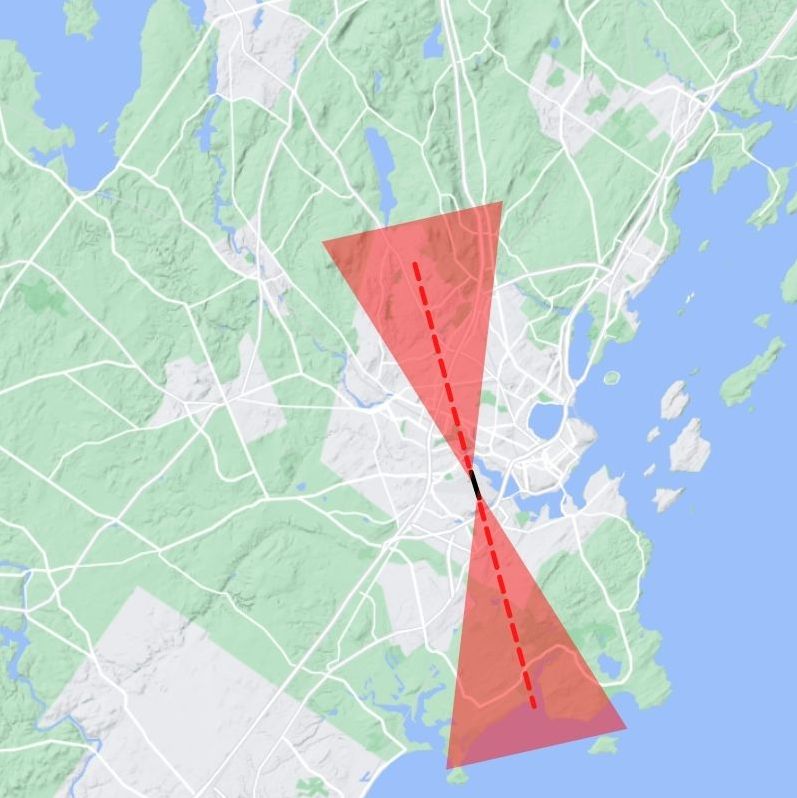A major runway repaving project began Monday at the Portland International Jetport, meaning more air traffic noise in some nearby neighborhoods that don’t normally experience much of it.
The Jetport’s primary runway, which sits on an east-west axis, will be closed until June 13 for resurfacing and lighting upgrades to extend its life at least 15 more years. The project involves upgrading incandescent bulbs to LEDs, laying down four inches of fresh asphalt and repainting.
During the project, all traffic at the airport will be rerouted onto the facility’s secondary north-south runway, which bisects the runway that will be under construction. This change will put takeoffs and landings over parts of Portland, South Portland, Scarborough and Westbrook that normally only see about 3% of the facility’s traffic.

“They may be accustomed to seeing a little two-seat or four-seat airplane going over their head, a propeller airplane – where for the next 56 days they’ll have all of our full-size passenger commercial service jets taking off and landing over their neighborhoods,” Zach Sundquist, the Jetport’s assistant director, said in an interview.
Flights go in and out of the airport between about 5 a.m. and 12:30 a.m., Sundquist said. Jets may be asked to approach or depart the runway from the north or south depending on daily wind conditions. Residents can get details on these daily flight plans on the Jetport’s website.
A rough map on that site shows that neighborhoods under the temporary flight path will include Thornton Heights, Pleasant Hill, the Spurwink Road area, Higgins Beach and Scarborough Beach to the south, and Nason’s Corner, Riverton, Prides Corner and parts of Westbrook that are closest to I-95 to the north.
Travelers should also be prepared for schedule changes if fog becomes too heavy at the airport, Sundquist said, because the north-south runway doesn’t have the same instrument landing system used on the primary east-west runway to guide planes in low-visibility conditions.
From May 16 to June 13, as part of the project, the airport will close entirely each night between 10:30 p.m. and 5:45 a.m., except for helicopters. Sundquist said this is to repave the area where the perpendicular runways intersect.
The Jetport expects to accommodate the same number of seats during the constrained hours in this period, he said, but there could be delays at check-in and security. Travelers with flights departing before 8 a.m. during this May-June phase of the project should arrive two hours early.
The entire project should be completed with both runways fully up and running in time for the airport’s busiest season, Sundquist said – summer and early fall when school is out of session.
“We just want to make sure that we stay ahead of the (runway) surface and we get it rehabilitated and good for another 15 to 20 years before we start having pavement failures that just require more maintenance and more downtime,” Sundquist said.




